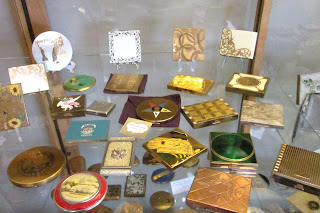Prairie Museum of Art and History recently received a lovely player piano from the Max Embree estate. The player piano and bench were manufactured by Wegman Piano Company in Auburn, New York. The piano was purchased by Pat Embree from Johnson Music Center at Hutchinson, Kansas in December 1986. This piano has been converted from toot-pedal operated to motor-driven.
Along with the piano were about 80 music rolls with classical, vintage popular, and even some early rock and roll tunes.The piano will be on exhibit and played only on special occasions
.
(Click to enlarge image.)
A Swiss emigrant, Henry Wegman found employment with the Steinway firm in New York City. In 1882 Wegman and a partner, Christian Hanning, established their own piano company. Located in Auburn, New York the factory made grand pianos, uprights, player pianos and organs. In a facility measuring 266 by 300 feet, they had eighty employees and made 1,200 instruments annually.
After the company reorganized in 1913, the Wegman Piano Company produced pianos under the Malcolm, Vough, Love, LeRoy, and Alexandria names, in addition to its own. It was one of only two factories in Auburn operating both night and day. A 5,000 square foot addition was being built onto the plant and the company anticipated it would soon be producing 3,000 instruments annually. The fate of the company was set on May 1, 1914 when a watchman detected a fire on the second floor of the factory. The fire started in the finishing room where oils and varnishes were stored and rapidly spread consuming the entire building. Over $100,000 in damage resulted from the fire, and a three-month supply of pianos had been ruined by water. A large quantity of special tools was also destroyed. Unable to recover, the Wegman Piano Company declared itself insolvent in January 1915.












